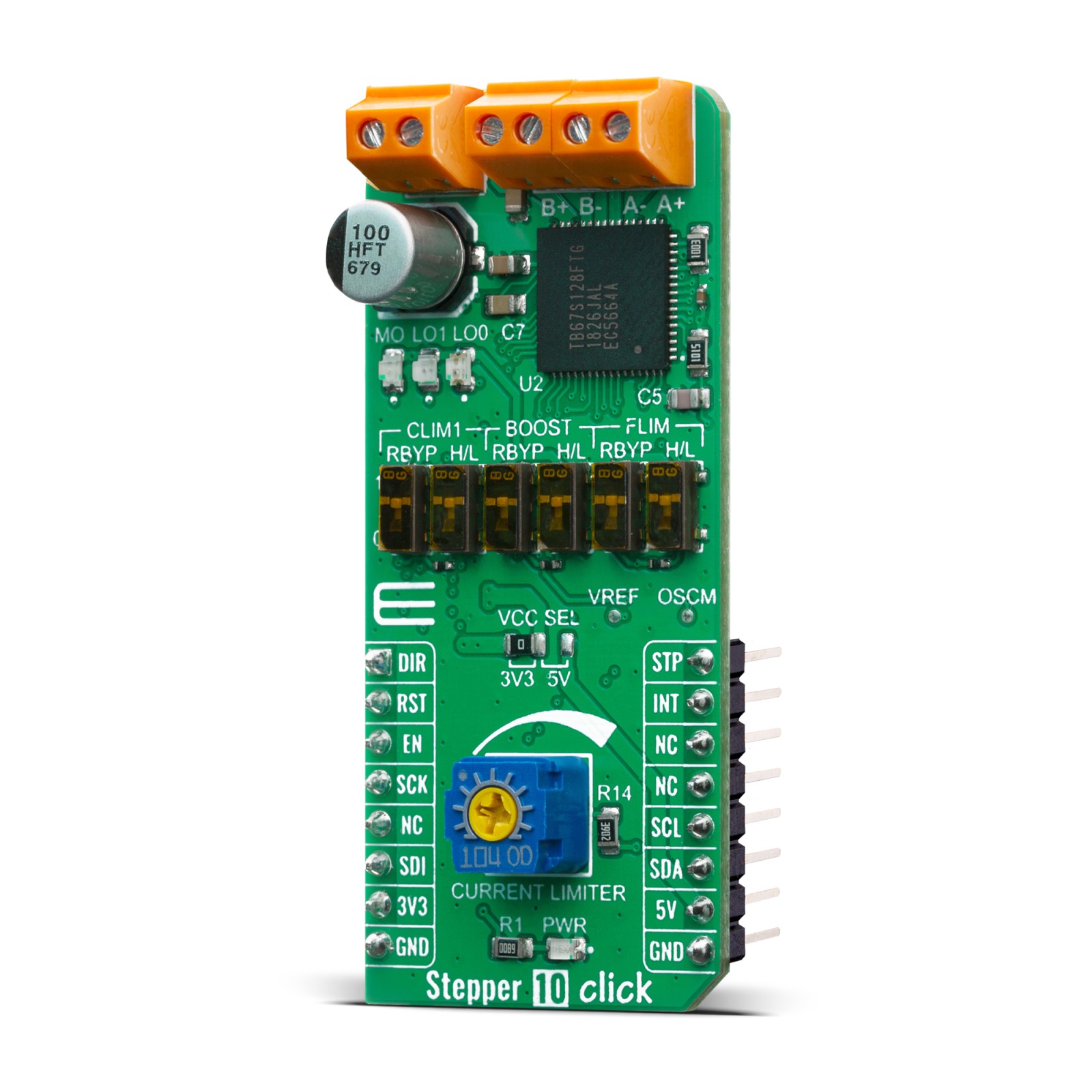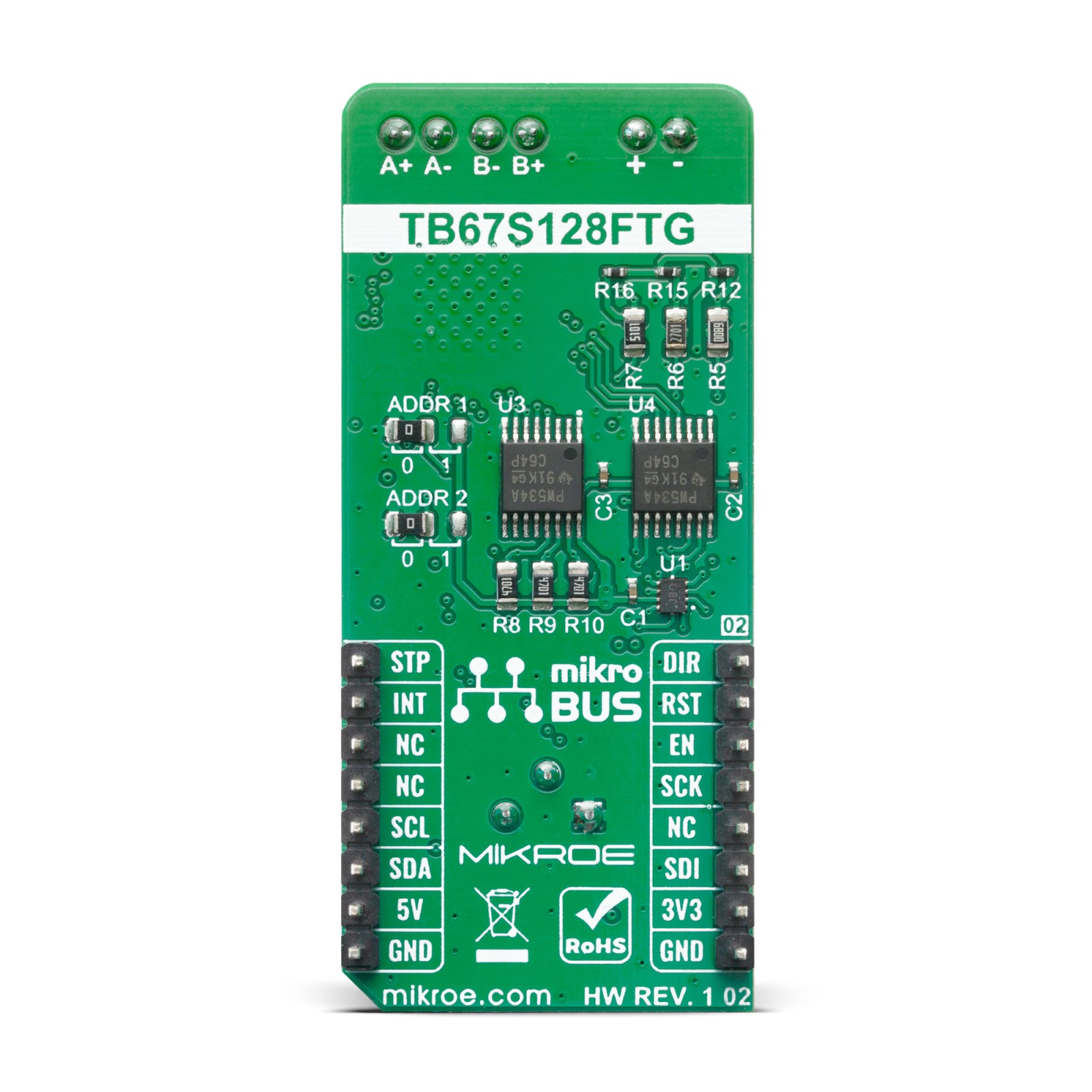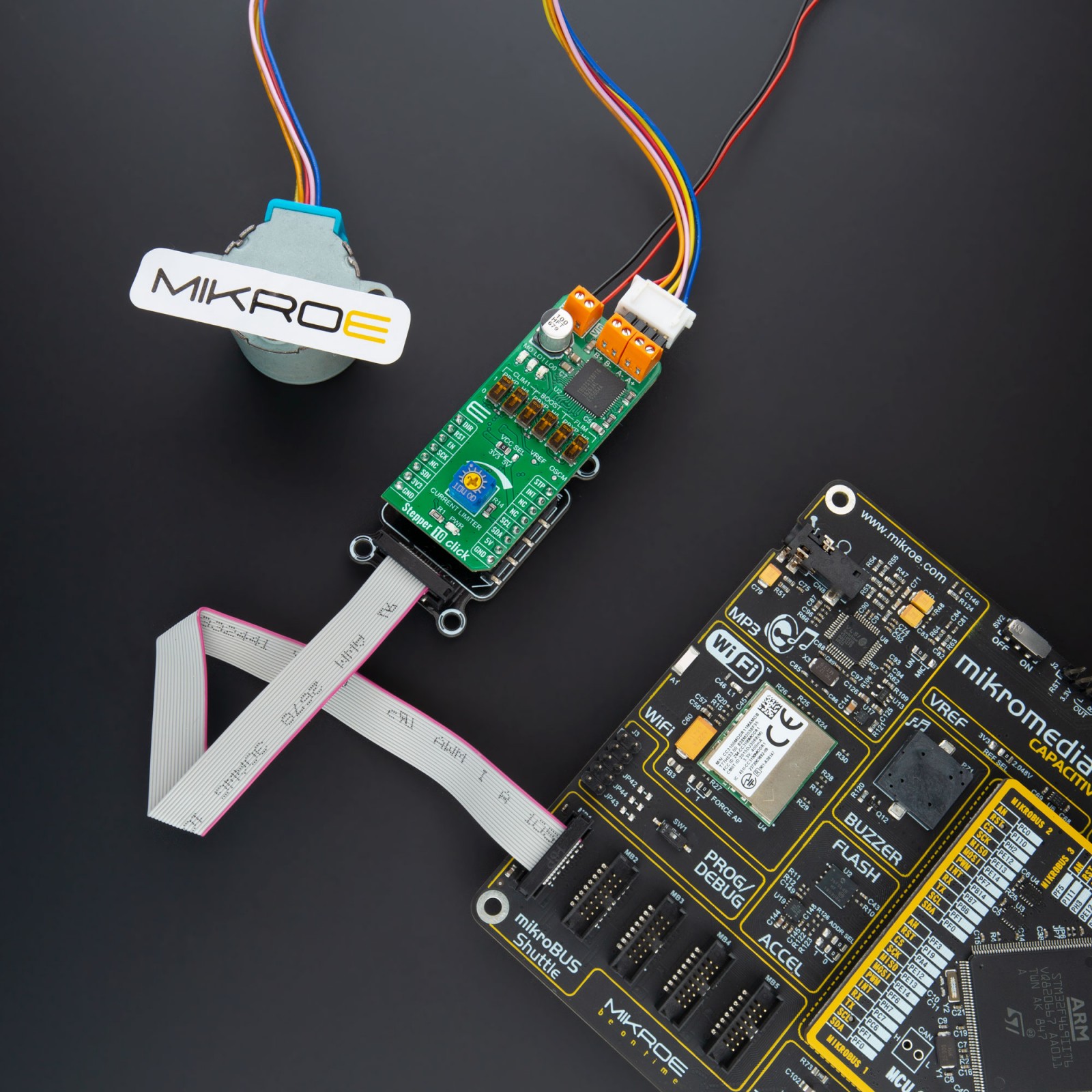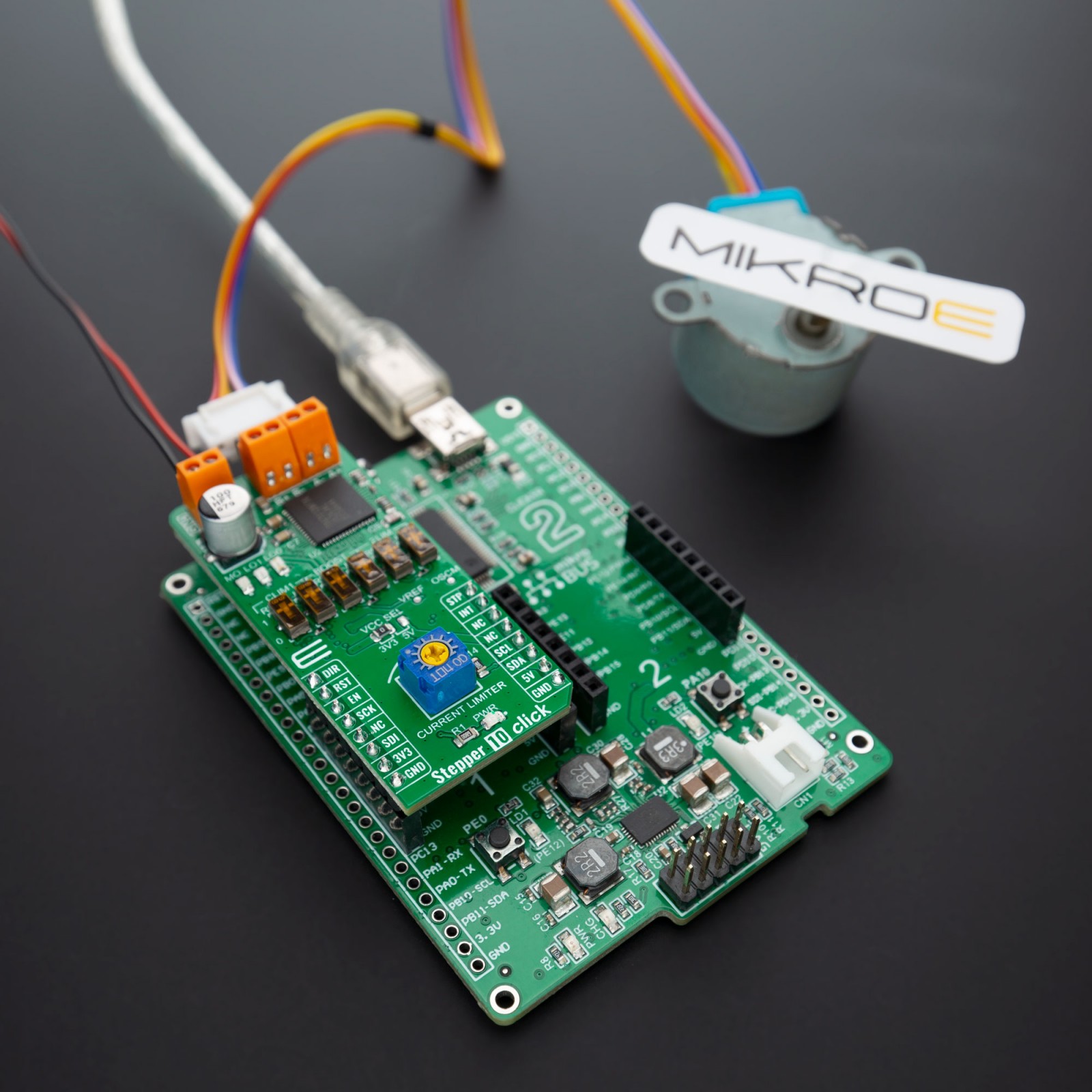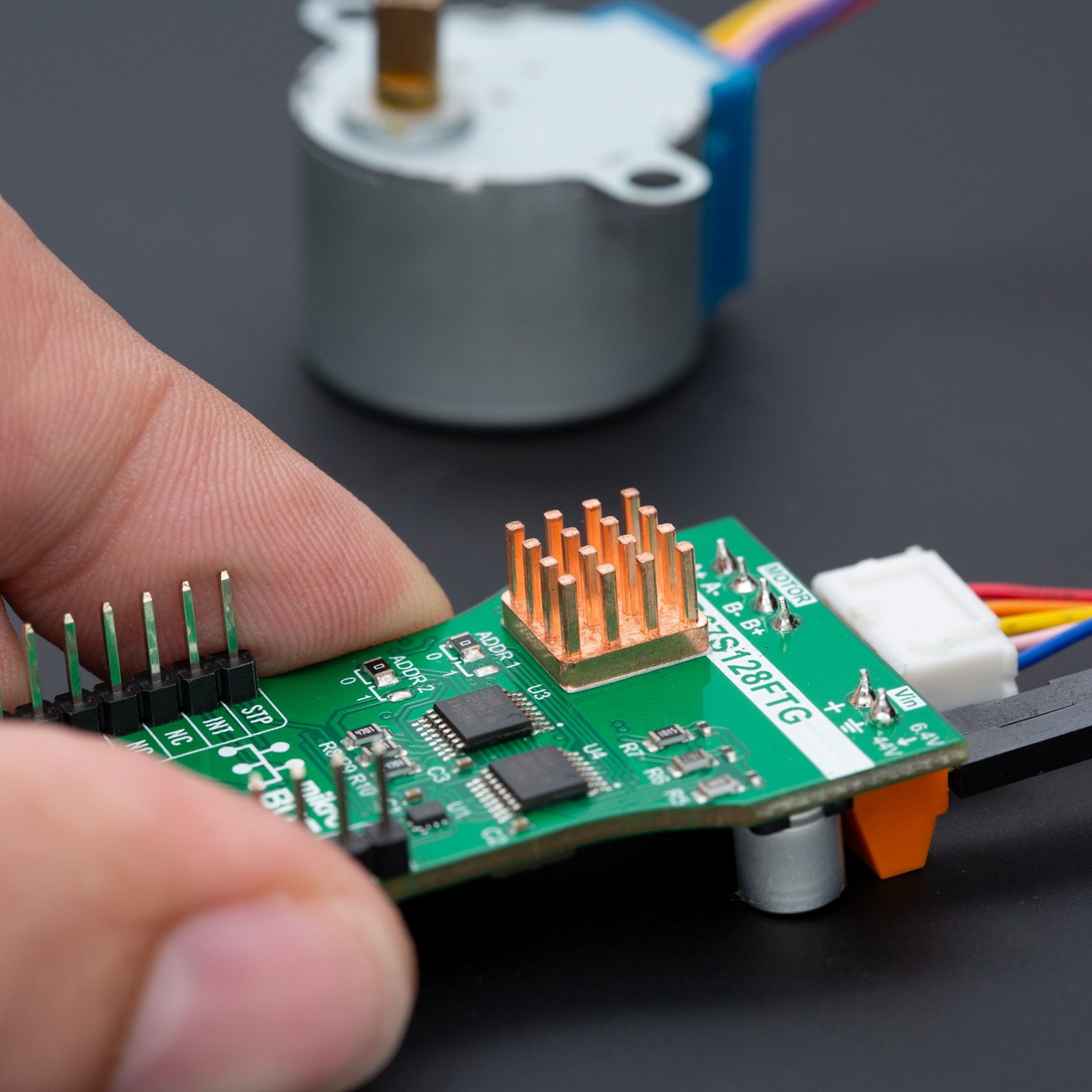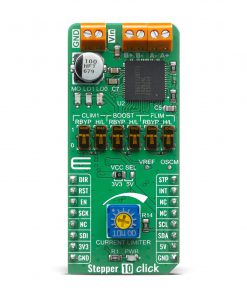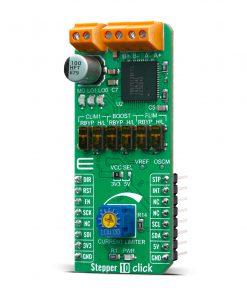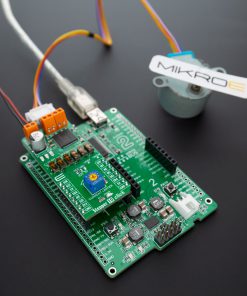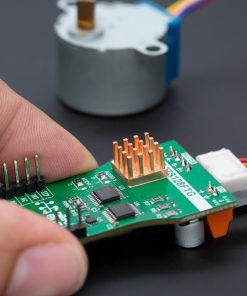Stepper 10 Click
R820.00 ex. VAT
Stepper 10 Click is a compact add-on board that controls one stepper motor with a PWM constant current drive. This board features the TB67S128FTG, a two-phase bipolar stepping motor driver from Toshiba Semiconductor. It is fabricated using a BiCD process with an output rating of 50V/5A and a built-in decoder that can supply the motor with a voltage of up to 44V. Toshiba’s innovative technology process results in low power consumption with low on-resistance (0.25Ω) on the integrated MOSFET output stage. The stepper motor can be driven in both directions from full step to 1/128 micro-steps. The motor driver possesses features like a high-efficiency motor control mechanism, advanced current detection system, active gain control, and multi-error detection functions. This Click board™ is a perfect solution for building various applications that require advanced stepper motor control with maximum precision and reliability.
Stepper 10 Click board™ is supported by a mikroSDK compliant library, which includes functions that simplify software development. This Click board™ comes as a fully tested product, ready to be used on a system equipped with the mikroBUS™ socket.
NOTE: Stepper 10 Click includes a high-quality Copper Heatsink with Conductive Adhesive Tape measuring 10x10x7mm in the same package, ensuring optimal thermal performance. This heatsink is also available for purchase separately in the MIKROE shop, providing the flexibility to enhance the cooling of your other components.
Stock: Lead-time applicable.
| 5+ | R779.00 |
| 10+ | R738.00 |
| 15+ | R697.00 |
| 20+ | R670.76 |


